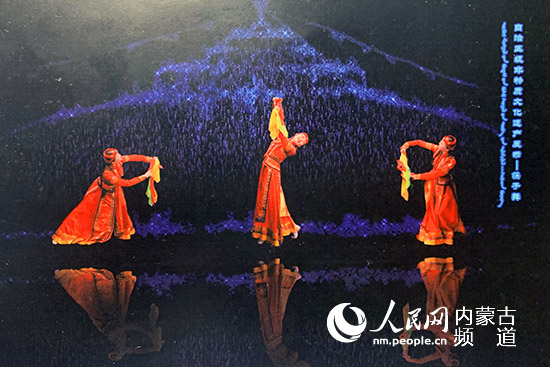Holograms, high-tech powers up intangible culture heritage

A holographic dance show captivates the audience at Inner Mongolia Museum, offering visitors an immersive experience on May 16. [Photo/people.cn]
A group of visitors said they were fascinated by the hologram theater during their visit in Inner Mongolia Museum recently.
Employing the latest holographic technologies, visitors were able to learn traditional Mongolian dances by pairing up with virtual figures in the theater.
“This is amazing! I can dance with the virtual actors and it feels like I’m a professional dancer,” said visitor Wang Xiaolong.
Officials said the hologram theater offered visitors an immersive experience and helped arouse their interests in the intangible culture heritage of the region.
“We are integrating holographic technologies with the intangible culture heritage of Inner Mongolia,” said Zhao Zhiming, general manager of Inner Mongolia Anda Culture Media Co Ltd, technological provider of the hologram theater.
“In addition to Mongolian dances, holographic tours of Mongolian weddings and Aobao worships are also on offer for visitors,” Zhao added.
According to local media reports, many museums and memorial halls in Inner Mongolia have introduced the technology.
VR technologies and other emerging digital ones have also been used to provide fun ways to demonstrate the region’s intangible culture heritage.
An increasing number of people and companies in Inner Mongolia have been investing in products related to intangible cultural heritage, including USB drives and handicrafts.
Inner Mongolia Yinxiang Cultural Co Ltd is one of the players in the region.
The company has designed hundreds of cultural products feature elements of intangible culture heritage. In addition, it has also established cooperative relations with inheritors of the cultural heritage crafts to help them promote the crafts.
“By combining elements of cultural heritage, our products are aesthetic and practical,” explained Wang Qiang, general manager of the company.
“And the cooperation with these inheritors has helped increase their incomes,” Wang added.
Officials said the participation of more companies has helped inject greater vitality into the protection and promotion of intangible culture heritage.
Zhang Li, deputy Party secretary of Hohhot Inner Mongolia Intangible Culture Heritage Protection Center, said that the local government has established an electronic data base of intangible culture heritage in the region and it plans to offer firm support to link companies with inheritors of intangible cultural heritage.





